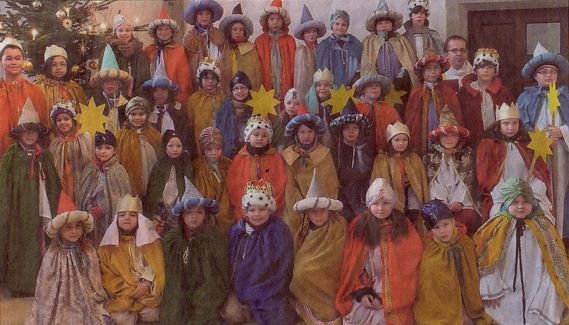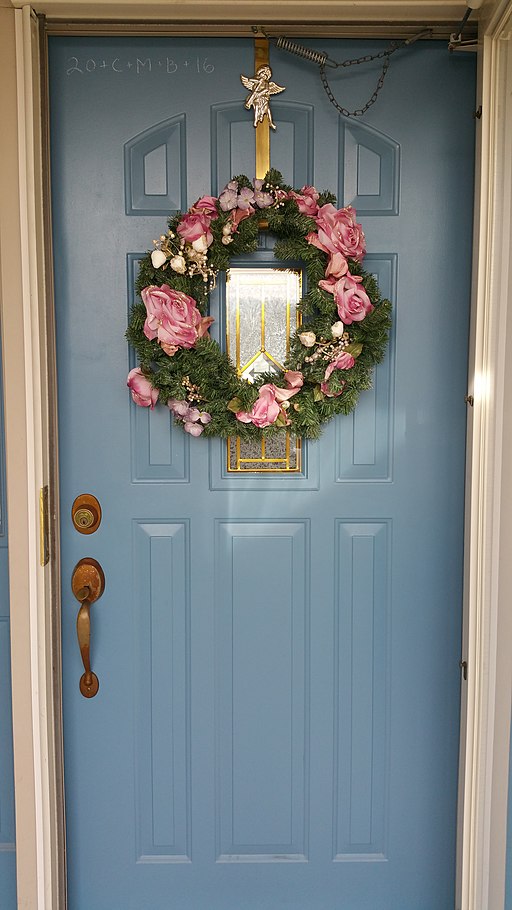Chalking The Doors: A German New Year’s Tradition Posted by Constanze on Dec 30, 2020 in Culture, Traditions
Guten Tag und FROHES NEUES JAHR (HAPPY NEW YEAR)! Today’s post is all about a German New Year’s tradition that takes place on January 6th. January 6th in Germany is known as das Dreikönigsfest (‘the three kings festival’), otherwise known as Epiphany, and is celebrated primarily in southern Germany, Austria, and parts of Switzerland. There are two elements of this Dreikönigsfest that I’d like to talk about today, namely the Sternsinger, and the chalking of the doors.
Die Sternsinger
This word translates to ‘the star singers’. On January 6th, it is customary for young boys and girls to dress as the three kings in the Christmas story, with one lead singer who carries a star. This procession of Sternsinger then go door to door, singing traditional carols – much like the carol singing that happens at Christmas time – and blessing the houses for the coming year. They may also collect die Spende (a donation) for charity.
Chalking the doors
In Catholic areas, the Sternsinger may bless the houses with an inscription on people’s front doors. Though traditionally written directly onto the doors in die Kreide (chalk), stickers are also sometimes used, as these are easier to remove later on. So, what do these inscriptions look like?
The inscription on the front door will look like this:
The star represents the star of Bethlehem; the letters C, M, and B stand for the Latin phrase Christus mansionem benedicat – ‘May Christ bless this house’; and the + signs represent the cross. As for the numbers, these represent the current year, so in the above example, it’s a blessing for the year 2008.
But it’s not just houses that receive this blessing; you will also see this inscription on the front door to shops and other, non-residential buildings.
So if you ever go to a Catholic region of Germany, or Austria, and see the inscription 20 * C + M + B + 21 (or another number), you now know what it means and why it’s there!
Frohes Neues Jahr!
Bis bald,
Constanze

Build vocabulary, practice pronunciation, and more with Transparent Language Online. Available anytime, anywhere, on any device.







Comments:
Deanya Schempp:
My German husband says that the CMB stands for the names of the three kings: Caspar, Melchior, and Balthazar. When the children play the kings, they often write the full names out.
Constanze:
@Deanya Schempp This is another theory but apparently the original meaning is the Latin! I guess it can mean both! 🙂